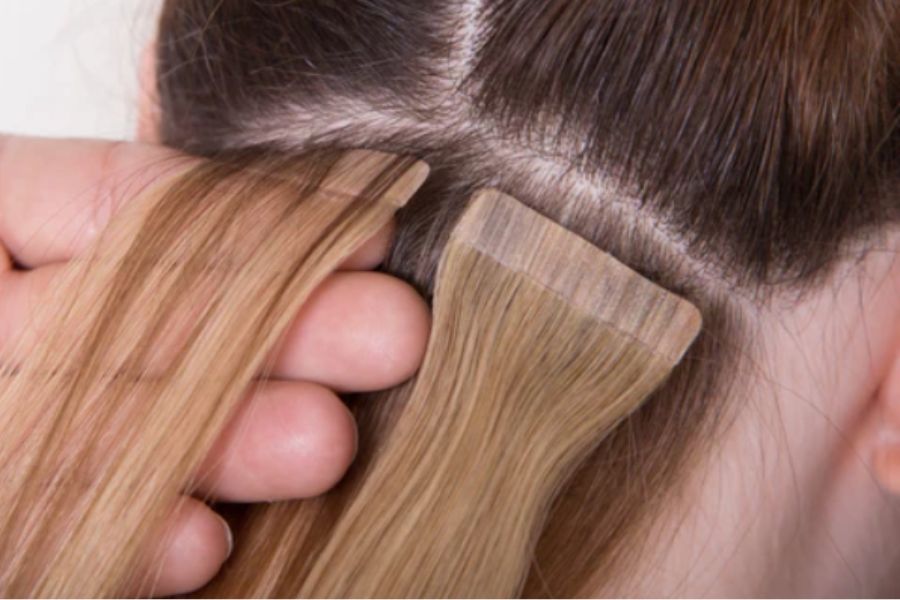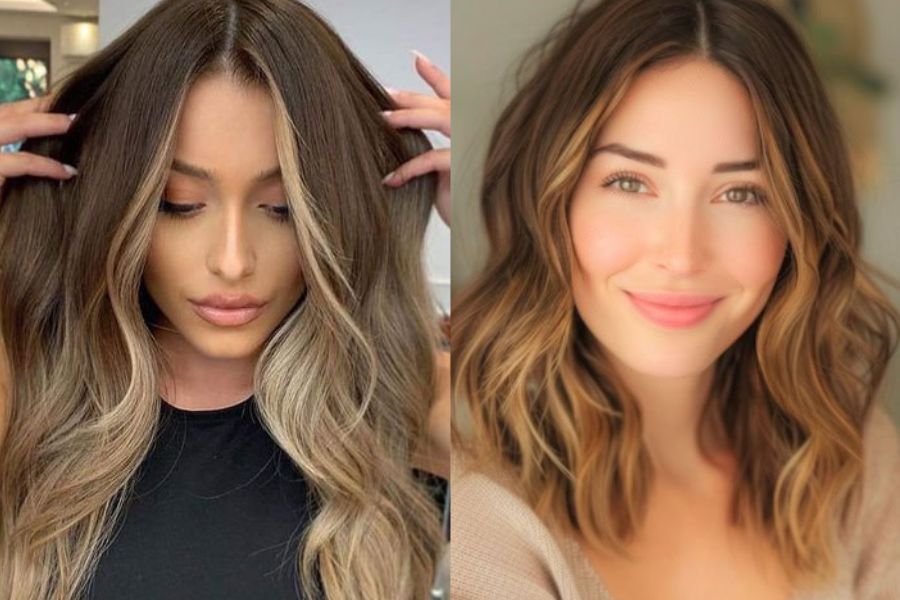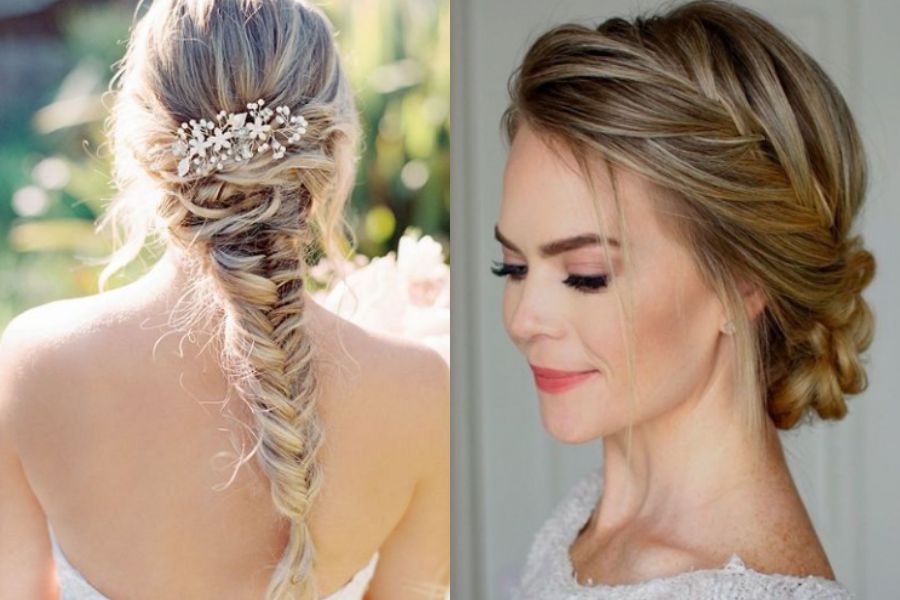How Do Hair Extensions Work? Step-by-Step Process

Key Takeaways
- Discover “how do hair extensions work” for different types, from clip-ins for quick application to fusion methods for long-term use.
- Selecting the right extensions involves knowing your hair texture, budget, and styles. Refer to our detailed guide below!
- Synthetic extensions are cost-effective, but human hair extensions provide excellent durability, natural beauty, and styling flexibility. Explore Livicor Hair's 100% virgin Remy human hair extensions for your perfect transformation!
How Do Hair Extensions Work: Step-by-Step Process for Each Type Extensions
How Do Clip-in Extensions Work?
Each weft has pre-attached clips at the base. To apply, open the clips, position the weft near your roots, and snap them shut to secure the extensions. Clip-in extensions are ideal for temporary changes or a quick hair boost, requiring no salon visit. You can apply and remove them at your convenience. With proper care, they can last over 6 months! This method demonstrates how do hair extensions work for your hair, offering a way to add volume or length without a salon visit.

How Do Tape-in Extensions Work?
How to put hair extensions in if you choose tape-ins? To apply tape-in extensions, thin, pre-taped wefts are sandwiched between sections of your natural hair. This semi-permanent option lasts 4-8 weeks and is gentle on hair, requiring no heat, making it best for those with thin to medium hair density.

How Do Sew-in (Weave) Extensions Work?
Weaves involve braiding your natural hair into a cornrow pattern. Then, the stylist sews weft extensions onto the braids using a needle and thread. Sew-ins are ideal for those looking for a long-term solution. They are especially suited for thick hair, as tight braiding can be uncomfortable for finer hair. Weaves can last over 2 months before needing adjustment.

How Do Fusion (Bonded) Extensions Work?
Fusion extensions require professional application. A stylist uses keratin adhesive to attach each extension, melting the keratin tip with a unique tool to bond it to your natural hair. This process answers the question of how do hair extensions work. These extensions are ideal for those wanting long-lasting results. Though costly, they provide a natural look, last up to 6 months, and offer versatile styling options.

How Do Micro-Link Extensions Work?
Micro-link (micro ring) extensions provide a semi-permanent solution by using silicone-lined beads to attach small hair strands to sections of your natural hair. Professional application can take several hours, but the results are worth it. These extensions last 3 to 4 months and can be adjusted and reused after removal.

How Do Halo Extensions Work?
How to attach hair extensions if you use halo extensions? Halo extensions drape from a wire that sits over the crown of your head. Depending on their quality and how often you use them, these extensions can last 3 to 12 months.

How To Choose Your Suitable Hair Extensions?
Now that you know "how are hair extensions attached,” let's figure out how to choose the best options to elevate your look!
Hair Type and Texture Assessment
Matching extensions to your hair type and texture ensures a seamless blend with your natural hair, making them virtually indistinguishable. Here are some ideas for choosing extensions based on your hair texture:
- Straight Hair: Tape-in and clip-in extensions are ideal for straight hair due to their smooth texture, creating a cohesive look.
- Wavy Hair: Tape-in and fusion extensions provide a natural flow with minimal styling.
- Curly Hair: Clip-in, sew-in, and micro-link extensions work well with curls, offering versatility and the most natural appearance.
- Thick Hair: Clip-in, sew-in, and micro-link extensions ideally add volume to thick hair.
- Fine Hair: Tape-in and clip-in extensions are lightweight, adding volume without straining your hair.
Budget and Cost
If you’re looking for an affordable volume boost, consider clip-in ($100-$400), halo ($200-$500), or tape-in extensions ($200-$800). Permanent options, however, are more expensive: sew-in ($200-$1500), micro-link ($300-$2500), and fusion extensions ($200-$3000).
Budget-friendly options are available, but ensure you balance extension cost with hair quality to achieve satisfactory outcomes. Consider the following:
- Synthetic Hair Extensions: These are more affordable and maintain their style after washing but cannot be styled with heat methods due to their heat sensitivity.
- Human Hair Extensions: These are prized for offering a natural look, can be styled with heat tools, and are more durable. Remy hair is a top-tier choice because it preserves the cuticles and aligns them in one direction, ensuring a healthy appearance.
Desired Length and Volume
When choosing extension length and volume, consider these factors for the best result:
- Natural Hair Length: For a more natural look, extensions should match your natural hair length and generally be no more than 3 inches longer.
- Desired Style: Match extension length to your style goals: longer extensions offer more updo and braid options, while shorter lengths suit bobs and pixies.
- Face Shape: Choose extension lengths that enhance and balance your facial features. Longer extensions can elongate the face, while shorter styles highlight specific features.
Here are some general guidelines to help you pick the perfect extension length:
- Short Hair: For natural hair above your shoulders, extensions around 12-16 inches can add volume and blend naturally.
- Medium-Length Hair: Extensions of 18-22 inches offer versatility for noticeable length or additional fullness.
- Long Hair: Choose extensions around 24 inches or longer to add volume while maintaining your natural look.
Installation Method
DIY installation is commonly linked to clip-in extensions, while professional installation covers sew-in, tape-in, fusion, and micro-link extensions. Here’s a comparison:
|
Installation Method |
Perfect For |
Pros |
Cons |
|
Clip-In Extensions |
All hair types and textures. |
Easy to apply at home, versatile. |
Not ideal for daily wear and can be uncomfortable for extended periods. |
|
Tape-In Extensions |
Straight, wavy, and fine hair. |
Quick application, natural look, and easy maintenance. |
Require professional removal and reapplication every 4-8 weeks. |
|
Sew-In Extensions |
Curly, thick, and coarse hair. |
Long-lasting, secure, and versatile. |
Require professional installation and removal and may be heavy for fine hair. |
|
Fusion Extensions |
Straight and wavy hair. |
Long-lasting, natural movement, and adaptable to various styles. |
Involve heat and adhesive and require professional removal. |
|
Micro-Link Extensions |
Wavy, curly, and thick hair. |
No need for heat or adhesive and versatile styling. |
Require professional installation, removal, and adjustments over time. |
With the different hair extension methods and their compatibility in mind, choose based on your preferences:
- Consider Your Lifestyle:
- For a busy lifestyle, clip-in extensions offer practical, occasional use.
- Fusion, tape-in, sew-in, or micro-link extensions might be suitable for a more permanent solution.
- Assess Your Styling Desires:
- If you enjoy changing styles often, clip-in extensions provide flexibility.
- Fusion or sew-in extensions are ideal for a natural look and long-term wear.
- Think About Maintenance:
- Clip-in or tape-in extensions are the most accessible care options for low-maintenance options.
- Fusion and sew-in extensions require more upkeep but offer lasting results.
Frequently Asked Questions
Are all hair extensions made from human hair?
No. Hair extensions can be made from human hair or synthetic materials like acrylic, nylon, or polyester.
Can I wear my hair up with extensions in?
Yes, you can wear your hair up with extensions like tape-in and micro-link. They add volume and length, which is ideal for various updos. However, avoid high ponytails, buns, and top knots to prevent pulling on the extensions.
What are the disadvantages of hair extensions?
Hair extensions have a few drawbacks, including potential damage to natural hair from improper use, care, or removal. Their weight can also cause scalp pain, irritation, and itching. It's important to follow the right techniques to know how to put hair extensions in correctly and avoid these issues







Comments